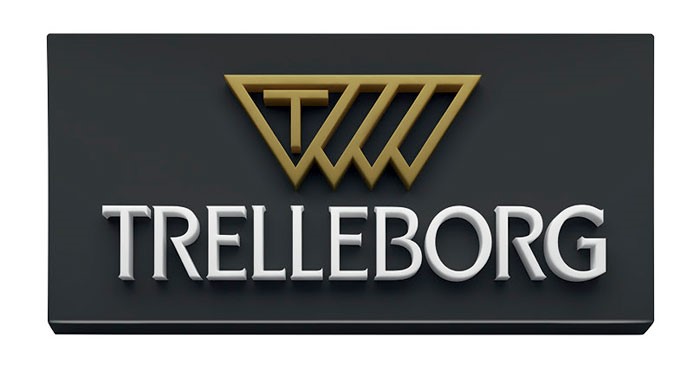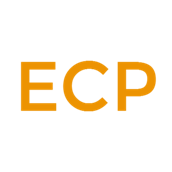Information
-
Audit Title
-
Document No. VS-HS-HSC-035 Issue 3
-
Project
-
Conducted on
-
Location
-
Project Manager
-
Regional Manager
-
Project Director
-
Opening meeting attendees:
-
Closing meeting attendees:
-
Comments:
-
Summary:
Previous Inspection
-
a) Has the last audit report been reviewed?
-
b) Are there any outstanding actions?
Context of the Organisation
-
4.1 Has Trelleborg determined external and internal issues that are relevant to its purpose, strategic direction an that affect its ability to achieve the intended result(s) of its management system?
-
4.2 Has Trelleborg determined the interested parties and their requirements that are relevant to the management system?
-
4.3 Has Trelleborg determined the boundaries and applicability of the IMS in order to establish its scope?
-
4.4 Is the scope of Trelleborg management system available and maintained as documented information?
-
4.5 Does Trelleborg scope state the types of products and services covered?
-
4.6 Has Trelleborg established, implemented, maintained and continually improved the management system including the processes needed for their interactions?
-
4.7 Has Trelleborg determined the processes needed for the management system and their application throughout the organisation?
Leadership
-
5.1 Does top management demonstrate leadership and commitment with respect to the integrated management system?
-
5.2 Has top management established an IMS policy?
-
5.3 Has top management ensured that the responsibilities and authorities for relevant roles are assigned and communicated within Trelleborg?
Planning
-
6.1 Has Trelleborg considered all the issues in regards to 'understanding the organisation and its context' and 'understanding the needs and expectations of interested parties' and determining the risks and opportunities?
-
Comments:
-
Recommended Action:
-
By when?
-
Responsible Person:
-
6.2 Has Trelleborg established the IMS objectives at relevant functions and levels?
-
Comments:
-
Recommended Action:
-
By when?
-
Responsible Person:
Support
-
7.1 Has Trelleborg determined and provided the resources necessary for the establishment, implementation, maintenance and continual improvement of the integrated management system?<br>
-
Comments:
-
Recommended Action:
-
By when?
-
Responsible Person:
-
7.2 Has Trelleborg:<br>a) Determined the necessary competence of person(s) doing work under its control that affects the performance?<br>b) Ensured that these persons are competent on the basis of appropriate education, training, or experience?<br>c) Retained appropriate documented information as evidence of competence?
-
Comments:
-
Recommended Action:
-
By when?
-
Responsible Person:
-
7.3 Does the department doing work under Trelleborg's control are aware of:<br>a) the IMS policy?<br>b) their contributions to the effectiveness of the IMS including the benefits of improved performance?<br>c) the implications of not conforming with the IMS, actual or potential on of their work activities?
-
Comments:
-
Recommended Action:
-
By when?
-
Responsible Person:
-
7.4 Has Trelleborg determined the internal and external communications relevant to the integrated management system?
-
Comments:
-
Recommended Action:
-
By when?
-
Responsible Person:
-
7.5 Has Trelleborg integrated management system included documented information that:<br>a) is required by the PAS 99:2012 standard<br>b) is documented information determined by the department necessary for the effectiveness of the IMS.
-
Comments:
-
Recommended Action:
-
By when?
-
Responsible Person:
-
7.6 When creating and updating documented information has Trelleborg ensured:<br>a) the documented information has an appropriate identification and description?<br>b) the documented information has an appropriate format?<br>c) the documented information has been reviewed and approved for suitability and adequacy?
-
Comments:
-
Recommended Action:
-
By when?
-
Responsible Person:
-
7.7 Has Trelleborg ensured that the documented information requited by the IMS is controlled to ensure:<br>a) that is available and suitable for use, where and when it is needed?<br>b) That it is adequately protected?
-
Comments:
-
Recommended Action:
-
By when?
-
Responsible Person:
-
7.8 Has Trelleborg, in order to control documented information, addressed:<br>a) its distribution, access, retrieval and use?<br>b) Its storage and preservation, including preservation of legibility?<br>c) Its control of changes (eg version control)?<br>d) Its retention and disposition?
-
Comments:
-
Recommended Action:
-
By when?
-
Responsible Person:
-
7.9 Has Trelleborg determined documented information of external origin necessary for the planning and operation of the IMS to be identified as appropriate , and be controlled?
-
Comments:
-
Recommended Action:
-
By when?
-
Responsible Person:
Operation
-
8.1 Has Trelleborg planned, implemented and controlled the processes needed to meet the requirements and implemented the actions determined in clause 6.1 'actions to address risks and opportunities' by:<br>a) establishing the criteria of those processes?<br>b) Implementing the control of the processes in accordance with the criteria?<br>c) Determining, maintaining and retaining documented information to ensure processes have been carried out as planned?<br>
-
Comments:
-
Recommended Action:
-
By when?
-
Responsible Person:
-
8.2 Has Trelleborg controlled planned changes and reviewed the consequences of unintended changes while taking actions to mitigate any adverse effects?
-
8.3 Has Trelleborg ensured that outsourced processes are controlled?
Performance Evaluation
-
9.1 Has Trelleborg determined:<br>a) What needs to be monitored and measured?<br>b) The method for monitoring, measurement, analysis and evaluation needed to ensure valid results?<br>c) When the monitoring and measuring shall be performed?<br>d) When the results from monitoring and measurement are analysed and evaluated?
-
9.2 Has Trelleborg retained appropriate documented information as evidence of the results?
-
9.3 Is Trelleborg evaluating the performance and effectiveness of the integrated management system?
-
9.4 Is Trelleborg conducting audits at planned intervals to provide information on whether the IMS:<br>a) conforms to the organisation's own requirements for its IMS?<br>b) Is effectively implemented and maintained?
-
9.5 Has Trelleborg planned, established, implemented and maintained an audit programme(s) including the frequency, methods, responsibilities, planning requirements and reporting which takes into consideration the importance of processes concerned , and the results of previous audits.
-
9.6 Has Trelleborg defined the audit criteria and scope of each audit?
-
9.7 Has Trelleborg selected auditors to conducted audits to ensure objectivity and impartiality of the audit process?
-
9.8 Has Trelleborg ensured that the results of the audits are reported to relevant management?
-
9.9 Has Trelleborg retained documented information as evidence of the implementation of the audit programme and the audit results?
-
9.10 Has top management reviewed the organisation's management system at planned intervals to ensure its continuing suitability, adequacy and effectiveness?
-
9.11 Has the Trelleborg planned and carried out taking into consideration:<br>a) The status of actions from previous management reviews?<br>b) Changes in external and internal issues that are relevant to the IMS?<br>c) Information on the performance, including trends in:<br>1) nonconformities and corrective actions<br>2) monitoring and measurement results; and<br>3)opportunities for continual improvement
-
9.12 Has Trelleborg ensured that the outputs of the management review includes decisions and actions relating to:<br>a) continual improvement opportunities?<br>b) Any need for changes to the IMS?
-
9.13 Is Trelleborg retaining documented information as evidence of the results of the management reviews?
Improvement
-
10.1 When a non-conformity occurs has Trelleborg:<br>a) reacted to the non-conformity as applicable and taken action to control and correct it and also deal with the consequence?<br>b) Evaluated the need for action to eliminated the cause(s) of the nonconformity, to ensure that it does not recur or occur elsewhere by:<br>1) Reviewing the non-conformity?<br>2) Determining the causes of the non-conformity?<br>3) Determining if similar nonconformities exist, or could potentially occur?<br>c) Implement any actions needed?<br>d) Review the effectiveness of any corrective action taken?<br>e) Made changes to the IMS, if necessary?
-
10.2 Has Trelleborg ensured that corrective actions are appropriate to the effects of the nonconformities encountered?
-
10.3 Has Trelleborg retained documented information as evidence of:<br>a) The nature of the nonconformities and any subsequent actions taken?<br>b) The results of any corrective action?
Audit Sign-off
-
Auditor
-
Auditee
Notes
Definitions
-
AUDIT - Systematic, independent and documented process for obtaining evidence and evaluating it objectively to determine how well the audit criteria are fulfilled.
-
AUDITOR - Person who has undertaken a recognised Auditor's course either conducted internally or by a recognised External body, or person who possesses sufficient business experience and knowledge of AS/NZS ISO 9001, 14001 and/or 4801 to conduct an audit.
-
RECOMMENDED ACTION - Action to eliminate the cause of a detected non-conformity or other undesirable situation. In context of this audit, the meaning is to include action taken to rectify an identified deficiency (non-conformance or improvement opportunity), or action to prevent recurrence of a previous deficiency.
-
IMPROVEMENT OPPORTUNITY - Observations made which are provided as guidance on potential system improvement.
-
NON-CONFORMANCE - Non-fulfilment of a requirement. In the context of this audit checklist, the word "non-conformance" is used to describe conditions outside previously agreed, defined or specified requirements (including statutory requirements). It is a deficiency in documentation or procedures that reduces the quality of a material or service or introduces unacceptable risks to safety or the environment.
-
NOT APPLICABLE (N/A) - In some circumstances, the question may not be applicable to the works being audited. In this instance, N/A can be recorded against the criteria and the question and points available removed from the audit scoring process.
-
MAJOR NON-CONFORMANCE - In auditing terminology a major non-conformance indicates the absence of a system or part of the system, or that the documented systems or procedures are not being followed. A major non-conformance can be where there is an obvious and potentially threatening system discrepancy likely to expose people, the environment, or the company to high or extreme risk. Non-conformances identified as the primary cause of a significant incident, or a warranted customer complaint, are considered major. A major non-conformance may require immediate rectification if there is a threat to the environment, equipment or the safety of people.
-
PREVENTATIVE ACTION - Action taken to prevent possible occurrence of potential deficiency / adverse impact to the quality, safety and environment.
-
SYSTEM - Consists of the following elements; policy, procedures, safe work procedures, safe work instructions, environmental instructions, forms, checklists, templates, plans and tools.
-
KEY:
C = Conformance
IO = Improvement Opportunity
NC = Non-conformance
Mj NC = Major Non-conformance -
SCORING SYSTEM:
Conformance (C) = 10 points
Improvement Opportunity (IO) = 5 points
Non-conformance (NC) = 0 points
Major non-conformance (MjNC) = -5 points










